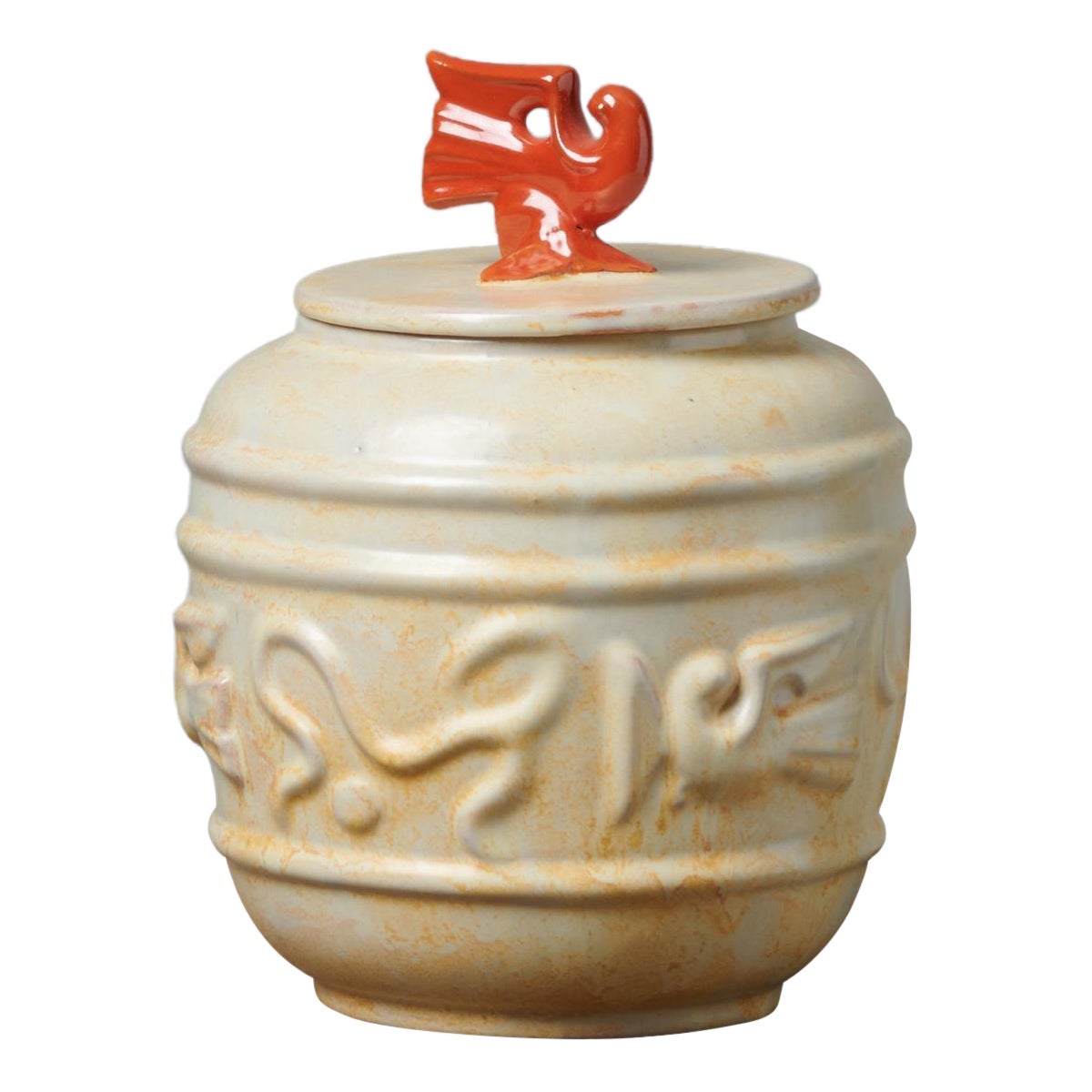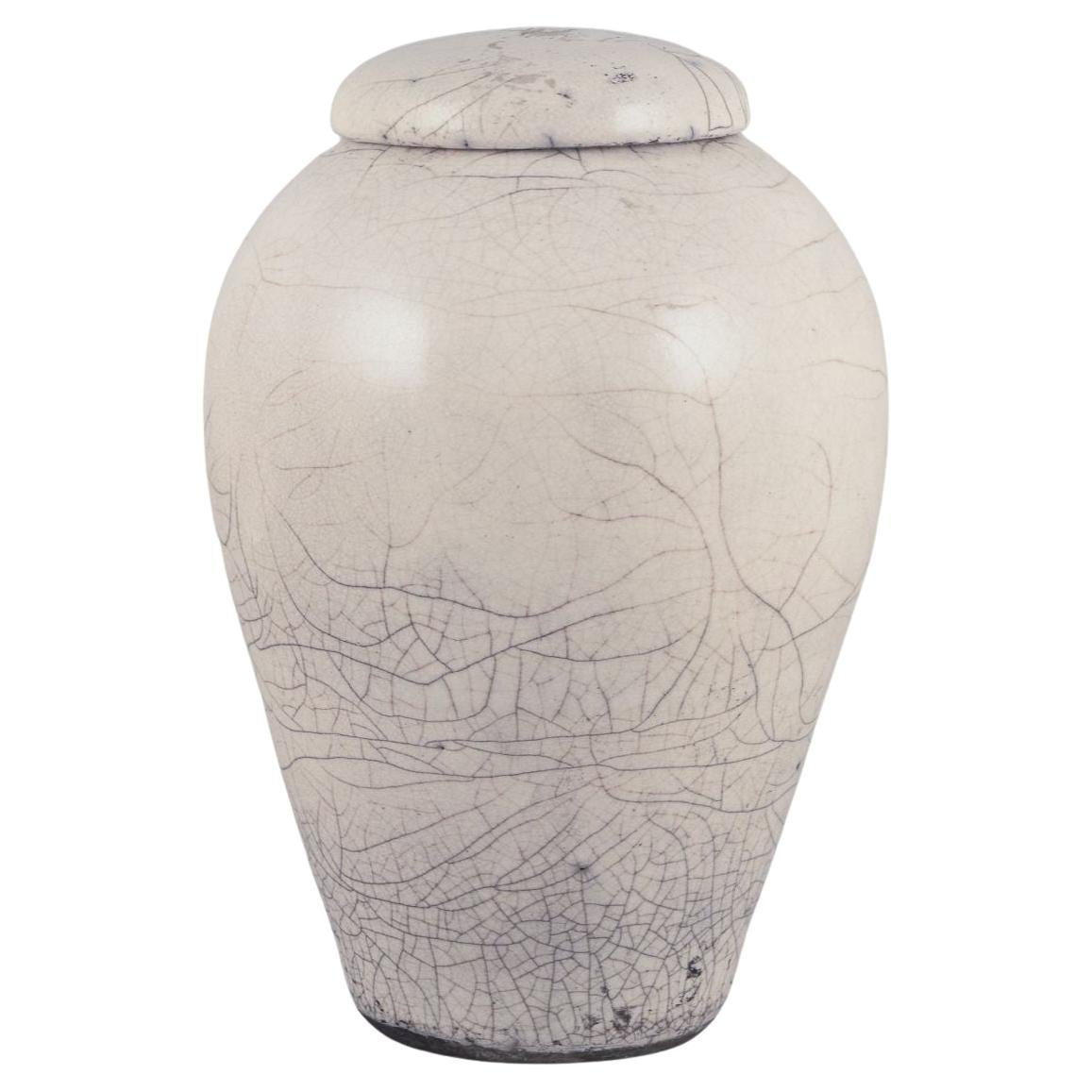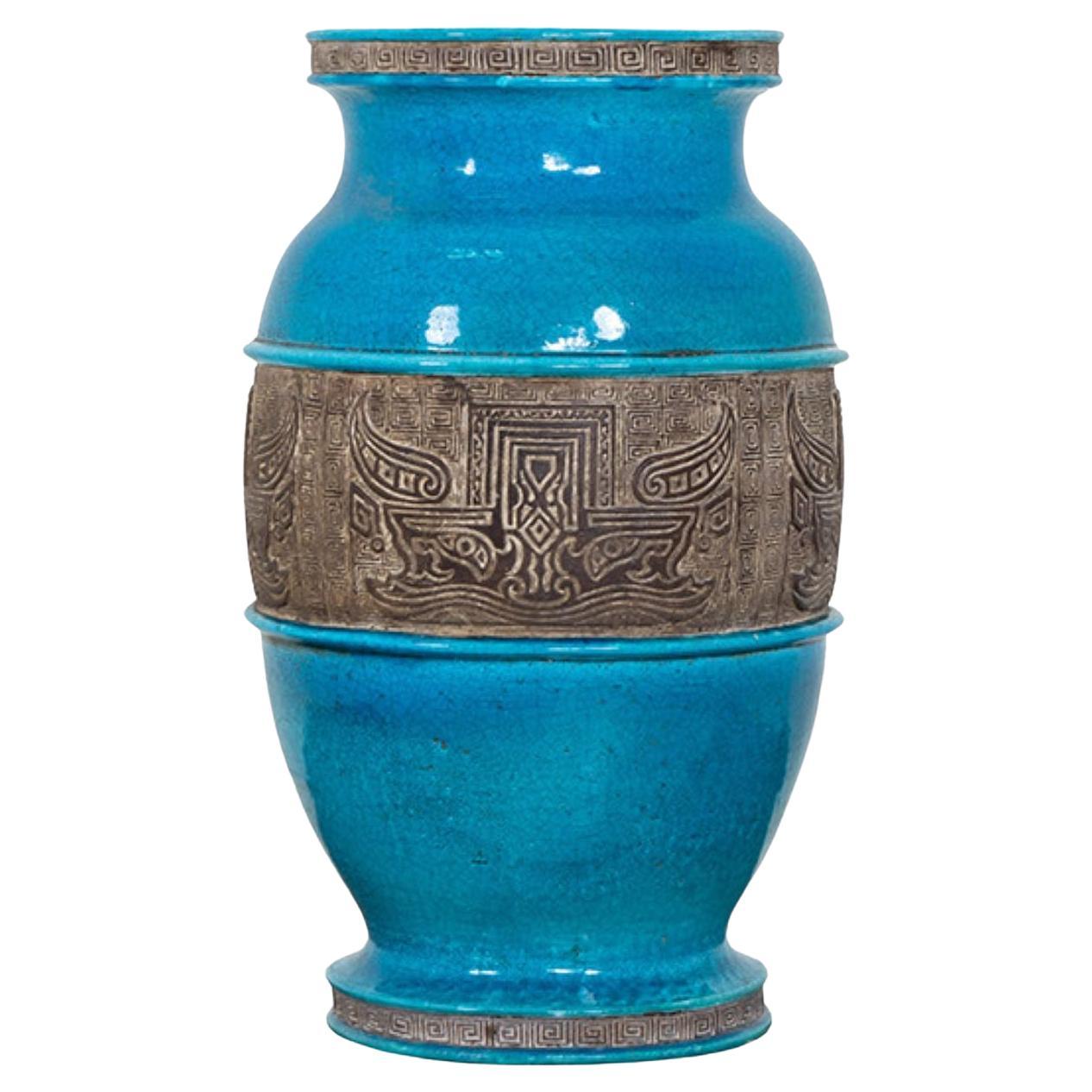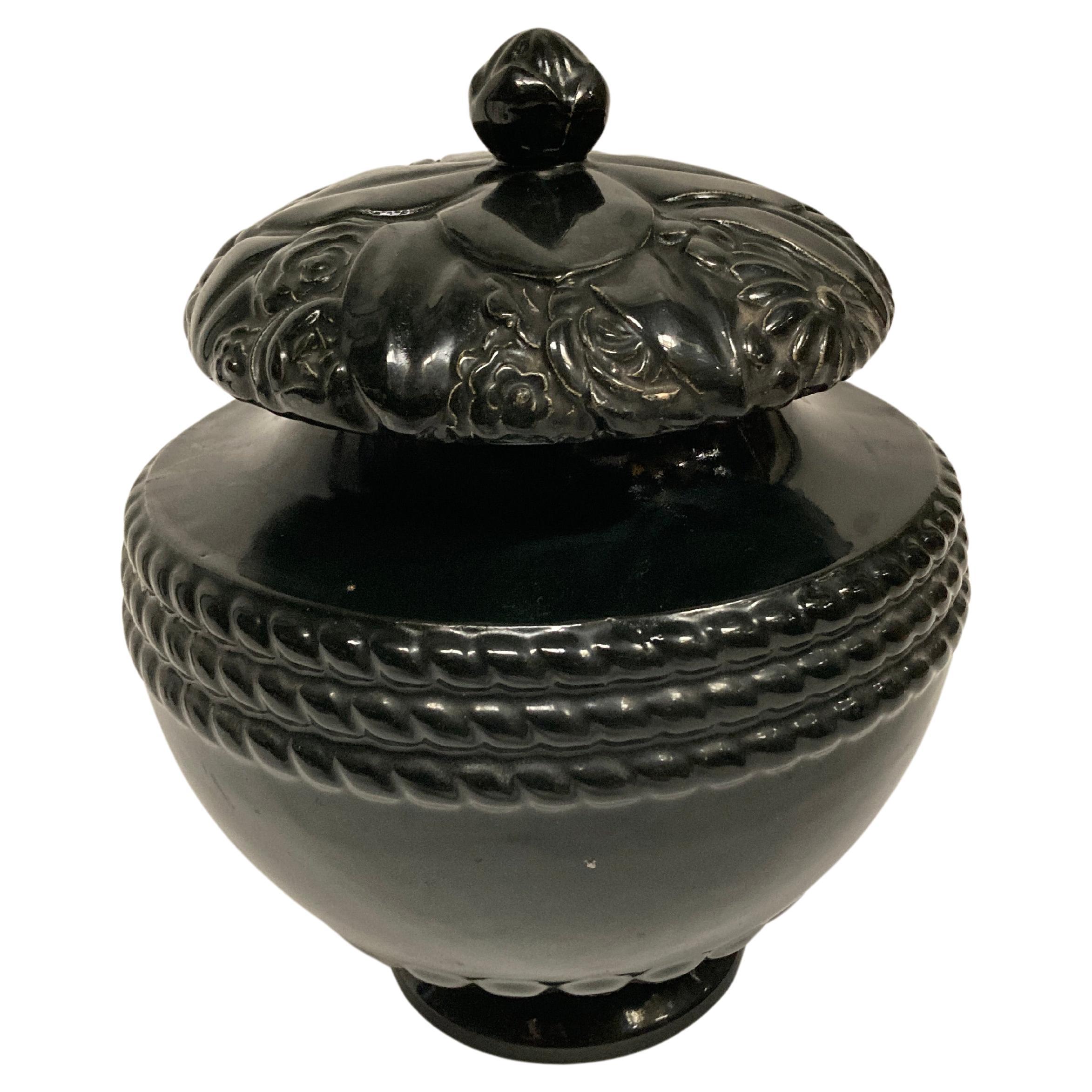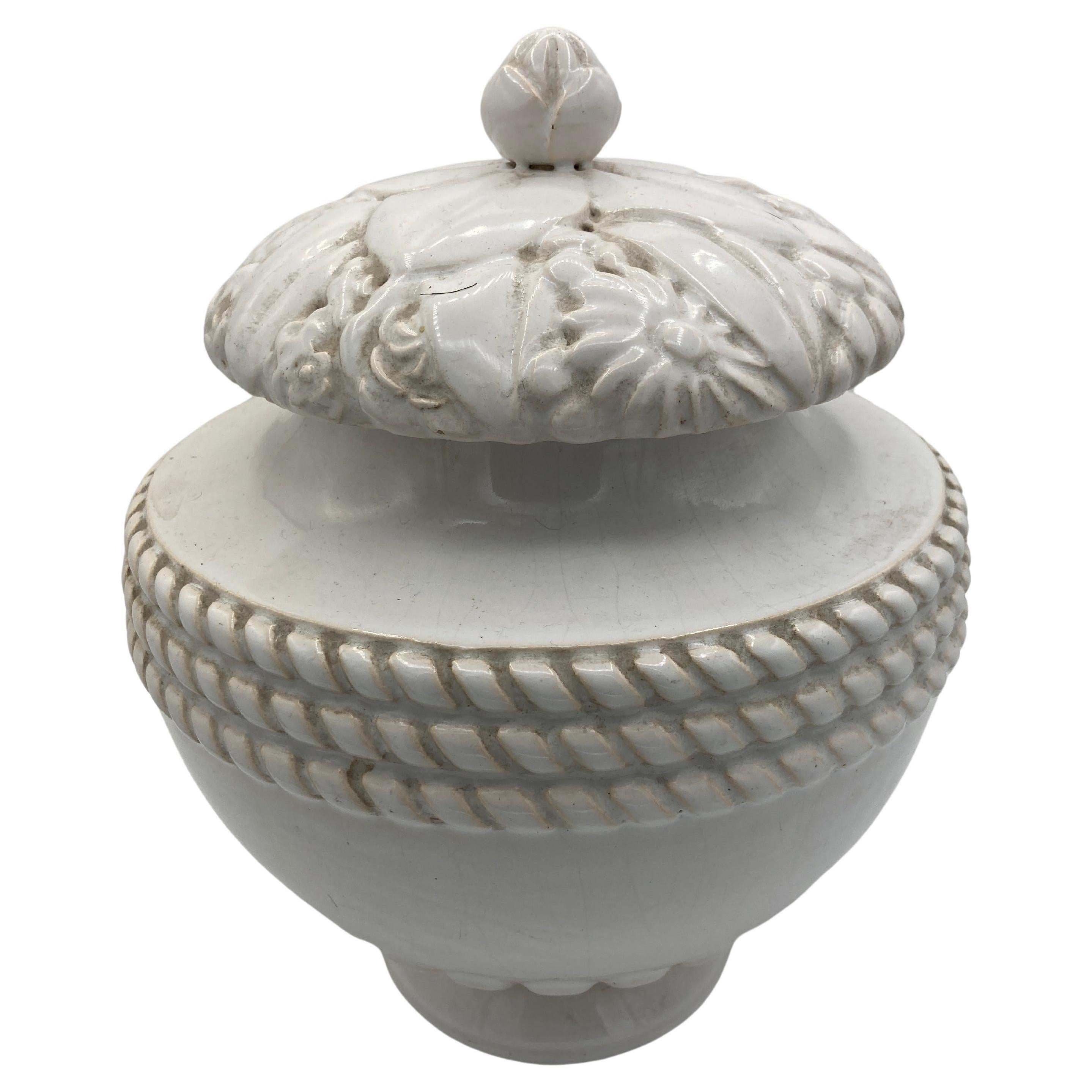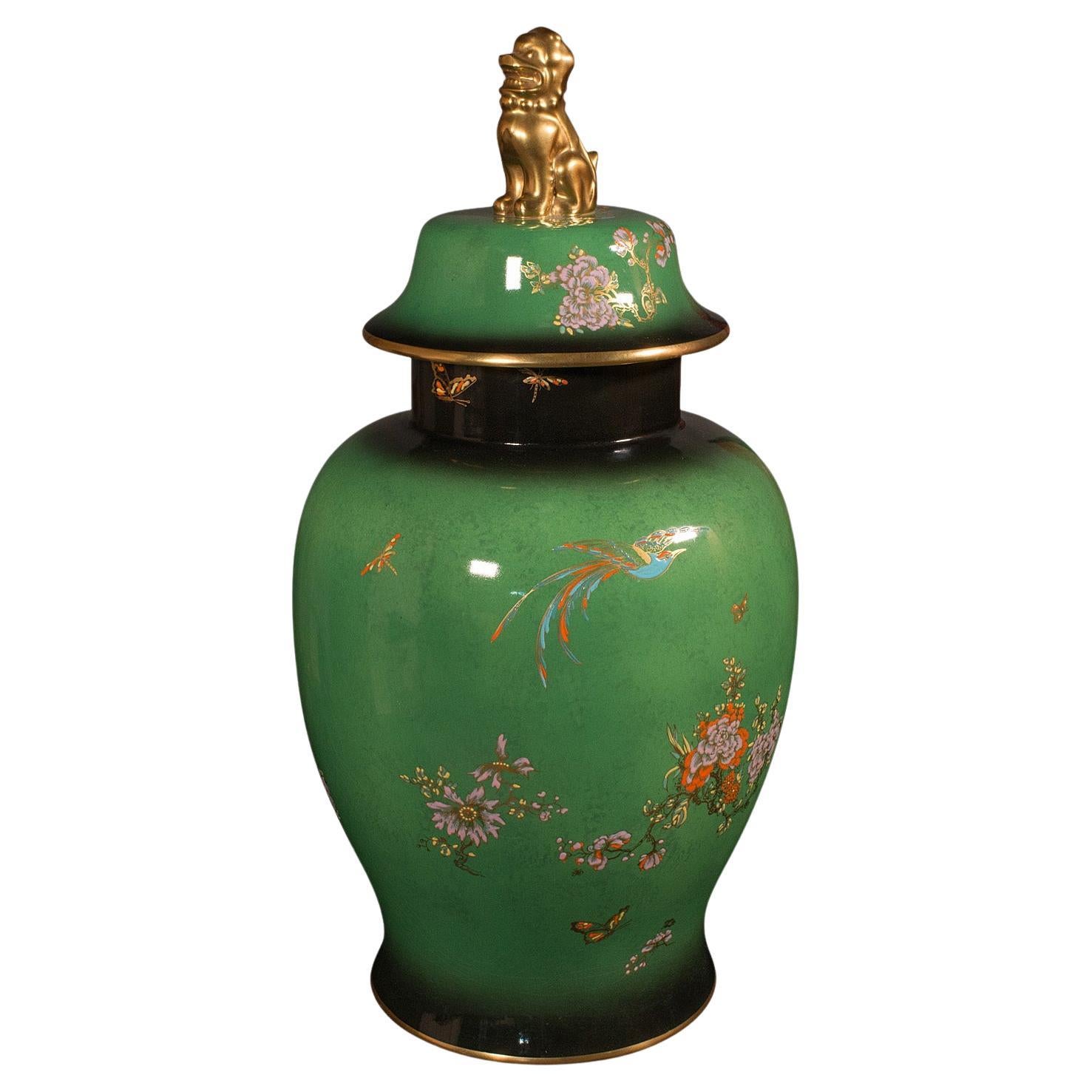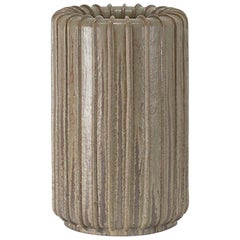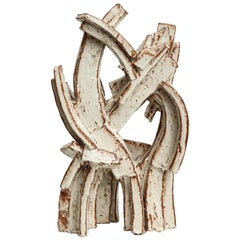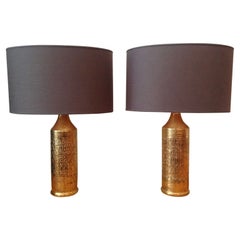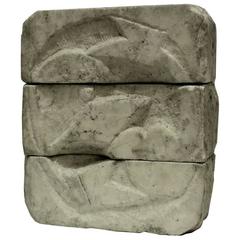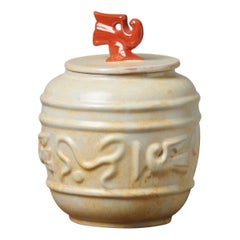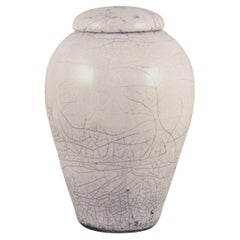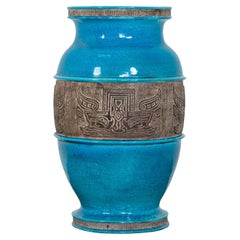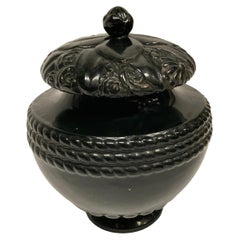Items Similar to Unique, Covered Ceramic Urn by Tyra Lundgren for Rorstrand
Want more images or videos?
Request additional images or videos from the seller
1 of 6
Unique, Covered Ceramic Urn by Tyra Lundgren for Rorstrand
Price Upon Request
Price Upon Request
Price Upon Request
Price Upon Request
Price Upon Request
Price Upon Request
Price Upon Request
Price Upon Request
Price Upon Request
Price Upon Request
About the Item
Beautiful covered urn by Tyra Lundgren for Rorstrand, Sweden. Created for the 1930 Stockholm Exhibition that showcased Sweden’s most modern achievements in the design at that time. Cherubs with fish in relief as handle on top and around exterior of the urn.
Tyra Lundgren(1897-1979)
Swedish sculptor, ceramicist, glass and textile designer. She studied at the Higher Art and Design School (HKS) 1918-1922 and then at the Royal Art Academy in Stockholm 1918-1922. Upon graduation she went abroad and studied sculpture under Anton Hanak in Vienna and André Lhote in Paris. Tyra Lundgren lived and worked in France and Italy until 1940, when she returned to Sweden.
Tyra Lundgren worked as an independent designer for a large number of European ceramics and glass companies. Between 1924-1937, she designs for Arabia and 1941-1951 for Gustavsberg . Over a shorter period, 1929-1930, she was also artistic director of the porcelain group Rörstrand -Lidköping-Arabia. She has also worked for the Swedish glassworks Rejmyre and Kosta , Finnish glassworks Riihimäki , German porcelain factory Moser , French porcelain company in Sèvres and the Venetian glassworks Muranesi Vetri Venini.
In Sweden, her work is represented in museums throughout Europe and North America. In recent years, she had a studio in Fide, Gotland, and she donated a collection of their paintings to the Art Museum of Gotland . In 1950 she was awarded the medal Litteris et Artibus.
- Dimensions:Height: 28 in (71.12 cm)Diameter: 14 in (35.56 cm)
- Materials and Techniques:
- Place of Origin:
- Period:
- Date of Manufacture:1920s
- Condition:
- Seller Location:New York, NY
- Reference Number:1stDibs: U080718786092
About the Seller
No Reviews Yet
Recognized Seller
These prestigious sellers are industry leaders and represent the highest echelon for item quality and design.
1stDibs seller since 2003
9 sales on 1stDibs
Associations
20th Century Specialists
- ShippingRetrieving quote...Shipping from: New York, NY
- Return Policy
Authenticity Guarantee
In the unlikely event there’s an issue with an item’s authenticity, contact us within 1 year for a full refund. DetailsMoney-Back Guarantee
If your item is not as described, is damaged in transit, or does not arrive, contact us within 7 days for a full refund. Details24-Hour Cancellation
You have a 24-hour grace period in which to reconsider your purchase, with no questions asked.Vetted Professional Sellers
Our world-class sellers must adhere to strict standards for service and quality, maintaining the integrity of our listings.Price-Match Guarantee
If you find that a seller listed the same item for a lower price elsewhere, we’ll match it.Trusted Global Delivery
Our best-in-class carrier network provides specialized shipping options worldwide, including custom delivery.More From This Seller
View AllTall Ribbed Stoneware Vase by Arne Bang
Located in New York, NY
Beautiful tall ribbed vase by Arne Bang, Denmark, circa 1950. In excellent vintage condition.
Arne Bang (Danish, 1901-1983)
Tall ribbed stoneware vase, Denmark, circa 1950
Ston...
Category
20th Century Danish Ceramics
Materials
Stoneware
Price Upon Request
Stoneware and White Glaze Sculpture by Hertha Hillfon, circa 1965
Located in New York, NY
Beautiful ceramic sculpture by one of 20th century foremost Swedish artists, Hertha Hillfon.
Hertha Hillfon (Swedish, 1921–2013)
Ceramic sculpture, circa 1965
Stoneware, white...
Category
20th Century Swedish Abstract Sculptures
Materials
Clay, Stoneware
Price Upon Request
Glazed Gold Ceramic Lamps, Sweden, circa 1960
By Bitossi
Located in New York, NY
Beautiful pair of ceramic lamps by Bitossi for Bergboms, Sweden, circa 1960.
Rewired with new shades
Measures: 17.5 to top of socket
24" to top of shade.
Category
Vintage 1960s Swedish Scandinavian Modern Table Lamps
Materials
Ceramic
Price Upon Request
Modernist Sculpture in Marble by Henry Heerup
By Henry Heerup
Located in New York, NY
Henry Heerup (November 4, 1907-May 30, 1993) was a painter and sculptor born in Frederiksberg, Denmark.
He studied painting under Axel Jørgensen and Einar Nielsen at the Royal Danis...
Category
20th Century Danish Sculptures
Materials
Marble
Price Upon Request
Axel Einar Hjorth Occasional Table for Nordiska Kompaniet, circa 1930
By Axel Einar Hjorth
Located in New York, NY
Pine occasional table for Nordiska Kompaniet designed by Axel Einar Hjorth, circa 1930
Measures: 24" height x 31.5" diameter.
Category
Mid-20th Century Scandinavian Side Tables
Materials
Pine
Price Upon Request
Flamed Birch "Roma" Cabinet by Axel Einar Hjorth, ca. 1925
By Axel Einar Hjorth
Located in New York, NY
Beautiful darkened flamed birch "Roma" cabinet made for Bodafors, Sweden, circa 1925. Three-doors with birch interior. Excellent condition.
Axel Einar Hjorth (Swedish 1888 -1959)
“...
Category
20th Century Swedish Cabinets
Materials
Birch
Price Upon Request
You May Also Like
Retro Swedish Art Deco Ceramic Urn
Located in Kramfors, SE
Swedish Art Deco urn from the 1920s. The urn is made in ceramics by Uppsala Ekeby and measures 18 cm tall without the lid and 23 cm with the lid. The urn is a good size and is a love...
Category
Early 20th Century Swedish Art Deco Urns
Materials
Ceramic
Anita Wederbrand, Swedish studio ceramist. Unique lidded vase
Located in København, Copenhagen
Pre-owned goods are exempt from import duties for U.S. customers.
Therefore, no import tariffs will be applicable to your purchase.
Anita Wederbrand, Swedish studio ceramist.
Ceram...
Category
21st Century and Contemporary Swedish Vases
Materials
Ceramic
Impressive Mid-Century Italian Ceramic Vase
Located in New York, NY
A Mid Century glazed ceramic Italian vase featuring a terrific blue glaze. The vase is girdled with an unglazed band of stylized motifs including a boat upon the waves lifted by wing...
Category
Mid-20th Century Italian Vases
Materials
Ceramic
$3,200 / item
Ceramic urn designed by Louis Sue et André Mare
By Sue et Mare
Located in Bois-Colombes, FR
Rare urne or vase in ceramic designed around 1925 by French artists Louis Sue and André Mare
Documented
Category
Vintage 1920s European Urns
Materials
Ceramic
Ceramic urn designed by Louis Sue et André Mare
By Sue et Mare
Located in Bois-Colombes, FR
Rare ceramic by duet of French Artist Louis Sue and André Mare.
The piece is very documented in books and museum.
Often used on the steam line between France to US
Circa 1925
Category
Vintage 1920s European Urns
Materials
Ceramic
Large Vintage Decorative Temple Urn, English, Ceramic, Vase, Mid-20th Century
Located in Hele, Devon, GB
This is a large vintage decorative temple urn. An English, ceramic vase with cover, dating to the mid 20th century, circa 1950.
Striking finish across a ...
Category
Mid-20th Century British Vases
Materials
Ceramic
More Ways To Browse
French Porcelain Vase With Cherubs
Tyra Lundgren Carolina
Cherub Fish
Large Blown Glass Vase
Fuchsia Furniture
Vintage Art Nouveau Vase
1920 Lalique
Post Modern Murano Glass Vase
Vase With Base
Glass Bowl Vases
Famille Chinese Vases
Mexico Vessel
Hand Cast Plaster
Lalique Signed
Poland Vase
Figural Vase
Antique Bird Vase
French Cameo Glass Vase
